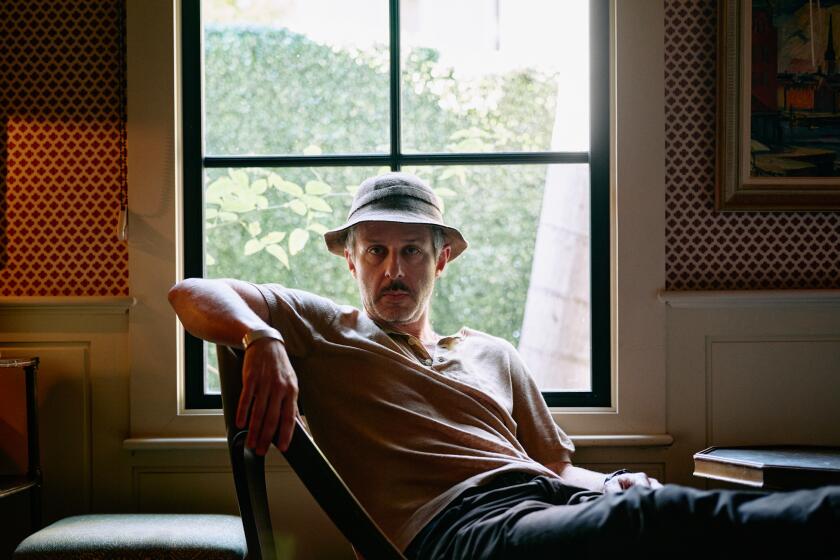Focus : Operation Restore Classics
The statistics are horrifying.
Only half of more than 21,000 feature-length films produced in the United States before 1951 still exist. The others have been lost, destroyed or deteriorated beyond repair, including Greta Garbo’s 1928 “The Divine Woman.” The original negative of John Ford’s 1939 Western “Stagecoach” is gone, as is the negative of Stanley Kubrick’s 1964 “Dr. Strangelove.”
Each day, more and more of our film history disintegrates. But cable’s American Movie Classics, in conjunction with the Film Foundation, made up of a group of renowned Hollywood directors, hopes to reverse that process with a Film Preservation Festival. The first festival to raise public awareness and funds for film restoration kicks off Friday and concludes the following Monday morning.
Among the 25 restored film classics featured in the festival are the national television premieres of the restored versions of Rouben Mamoulian’s 1935 “Becky Sharp,” the first three-strip Technicolor movie; the letterbox edition of 1930’s “The Big Trail,” which features John Wayne in his first starring role and was shot in an early wide-screen process, and Howard Hawks’ 1940 screwball comedy “His Girl Friday.”
Also included will be vintage newsreels, Bugs Bunny and Betty Boop cartoons, Spanish-language Laurel and Hardy featurettes and musical shorts.
Throughout the weekend, a toll-free hotline will be available to help aid the preservation efforts of the five major film archives: the International Museum of Photography at George Eastman House; the Library of Congress; the Museum of Modern Art; the National Center for Film and Video Preservation at the American Film Institute and the UCLA Film and Television Archive.
“Our charter is to present a museum of classic films and recapture kind of the golden years of Hollywood,” says Kate McEnroe, AMC vice president and general manager. “We have been really very active in anti-colorization and we restored (with UCLA) ‘Hell’s Angels.’ There’s a small group of aficionados that really love film and understand the need for film preservation, but mass America doesn’t. And that is where I think AMC felt that we should do something.”
Bob Rosen, director of the UCLA Film and Television Archive, believes the AMC weekend is extremely important to the five archives. “Unless we move quickly, we stand to lose so much more, and one of the ways to actually convince people that preservation is important is when they see a beautifully restored print and realize the tragedy of what might have been lost,” Rosen says. “One of the best cases for preservation is to show films.”
According to director and Film Foundation Chairman Martin Scorsese, film is more than an art form. “Good, bad and indifferent, it is our culture,” he says. “We’ve got to accept it. I guess I try to help instill a pride in what (filmmakers) did and to cherish (film) because ultimately it belongs to everybody. It says so much to me. Some of the films are not as good as others, but they say so much about our time.”
Chemistry is one of the main reasons films are deteriorating. Before 1951, films were printed on highly unstable nitrate stock. Expense is another stumbling block: The cost of transferring nitrate to safety film is $2 a foot.
“It would be so great to get government funding,” Scorsese says. “I would love to get government funding to finish the transfer of nitrate to safety stock. I believe there is 100 million feet of nitrate (stock). That’s $200 million. The point is, there is all this nitrate stock of newsreels and documentaries. It’s pure history that is rotting away.”
“Until recently, many of the people who own films thought they had a limited useful life span,” Rosen says.
That mind-set changed with the growth of such ancillary markets as cable, videocassettes, laser discs and satellite delivery systems. “Suddenly, it was discovered that these older movies had a new commercial life,” Rosen says. “More than that, new generations came along for whom silent films might have its own distinctive charms. So there was a rediscovery of the fact that what was sitting in the vaults was not dead storage, but valuable corporate assets.”
Because of these ancillary markets, viewers finally can see pristine, uncut prints of films on television. “It is an eye-opener,” Scorsese says. “A whole other world has come alive. We are discovering so much of what American cinema was in the early ‘30s. It is taking away a lot of the old prejudices we had against film in the early ‘30s. We had the prejudice that when (films) were switching over from silent to sound, it cut down the creativity in telling stories. But, in reality, a lot of the films that were made were utilizing very innovative ways of using sound and still trying cinematic techniques. There were damn good movies made in that period.”
The AMC Film Preservation Festival begins Friday at 3 a.m. and continues until 3:30 a.m. Monday.
More to Read
Only good movies
Get the Indie Focus newsletter, Mark Olsen's weekly guide to the world of cinema.
You may occasionally receive promotional content from the Los Angeles Times.











